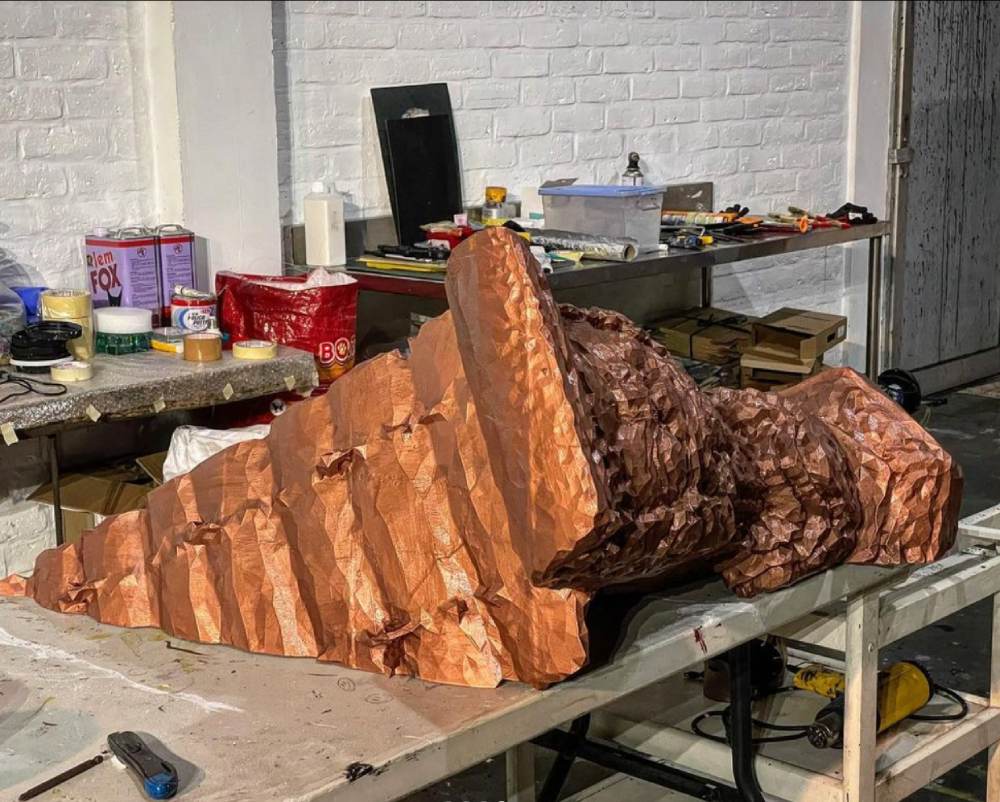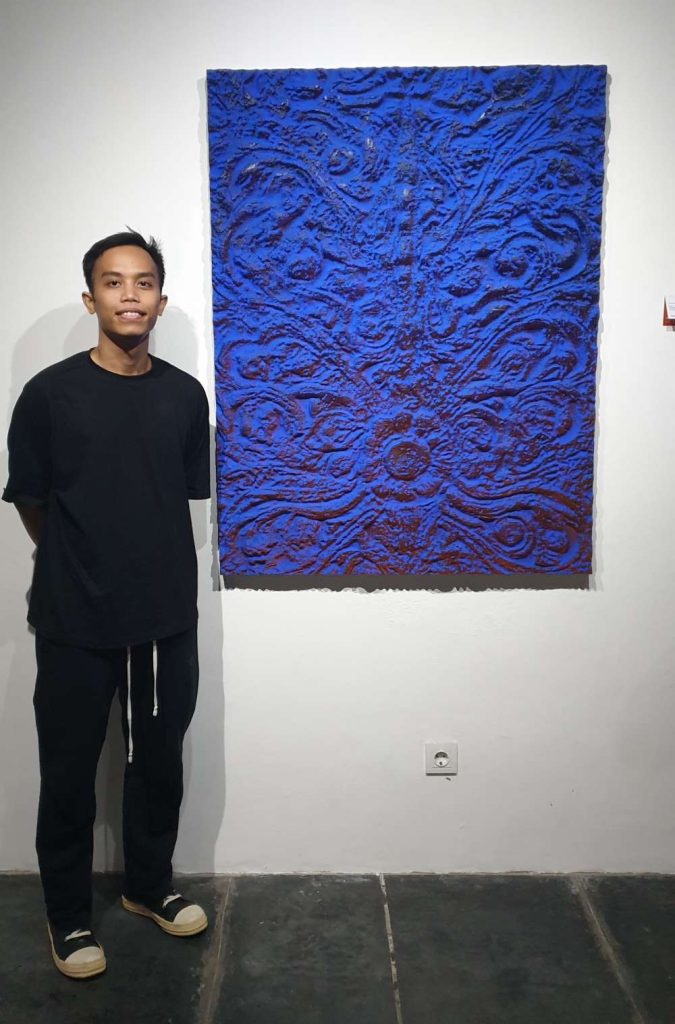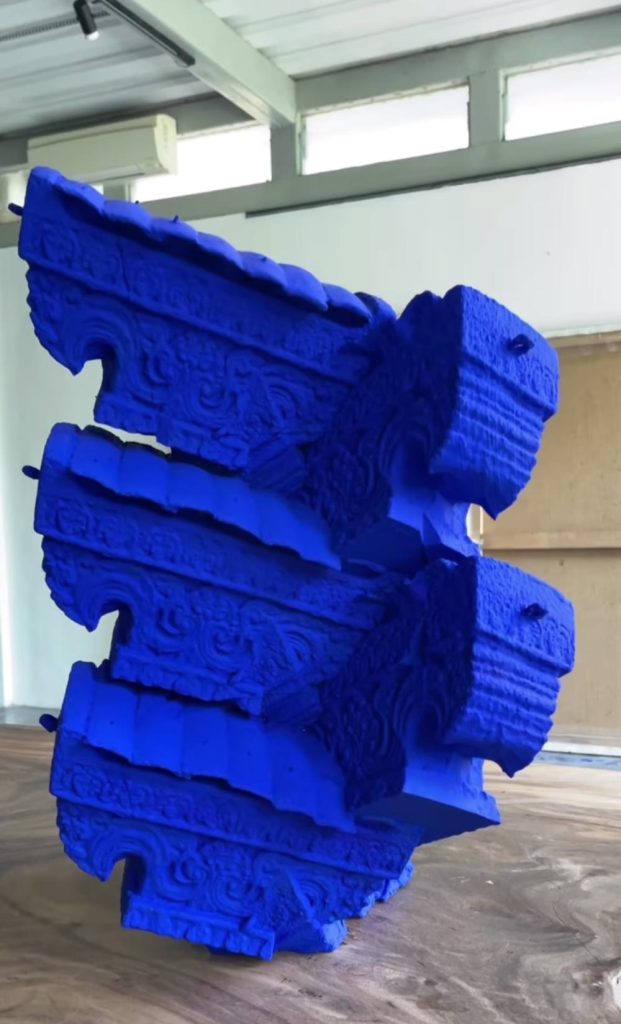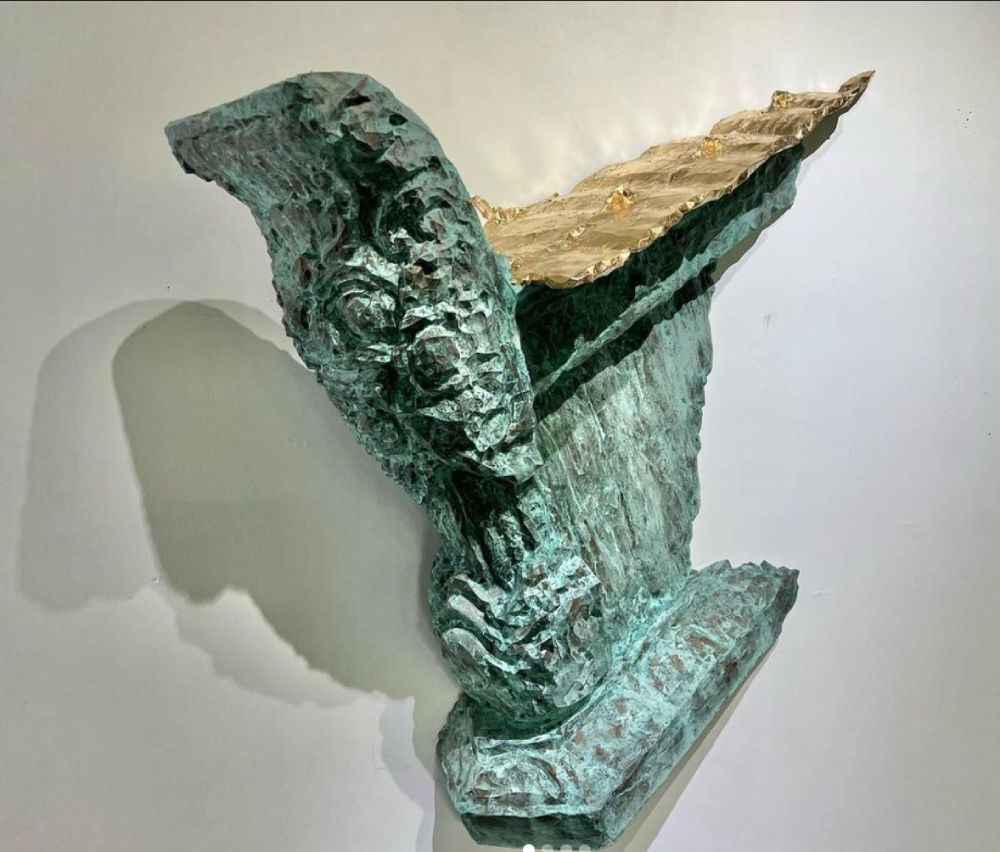
Emerging Balinese artist Jemana Murti has embarked on a distinct creative mission, anchored securely within his traditions while propelling him on an exciting trajectory and original art frontiers. The creative is exploring vast horizons for artistic development, utilising AI and 3D printing technologies.
Majoring in Fine Art at the Nanyang Academy of Fine Art in Singapore, one of the subjects Murti studied during his four years at college was New Media Art. The genre includes digital art, interactive art, internet art, virtual art, art made using AI, robotics, video games, biotechnology, 3D printing, computer animation; any form of contemporary art created using new technology. The subject ignited his already growing fascination for technology and the AI culture, and how to empower his ideas and develop his practice with hi-tech digital tools.
After returning to Bali in 2020 after four years in Singapore, along with vacations abroad, Murti had become progressively sensitive to the vulnerabilities of his culture. Some of the many questions he contemplated were, “What if the Balinese no longer honoured their responsibility as traditional custodians maintaining their culture? What would happen if we bestowed this obligation upon machines?” He especially laments the sale of cultural icons. This puzzle has inspired a fresh chapter in his innovative adventure.


Murti’s interest in the computer science phenomenon of Artificial Intelligence (AI), intelligence demonstrated by machines, as opposed to human intelligence, led him to discover Midjourney, a popular online learning program, early in 2022. When provided a list of words, the program reviews the terms, finds related pictures on the Internet, and finally formulates corresponding images. Fascinated with this methodology, Murti believed the program to be a system of how machines may comprehend and interpret culture.
Last August, he began experimenting with the program linked with 3D printers using thermoplastic to create prototype contemporary artworks. He fed Midjourney the words “Balinese carvings”, to which it responded with an array of images. The outcome is ‘Ghosts of the Future’, his first series of works, wall pieces and sculptures that fuse technology with Balinese culture.
Midjourney developed an array of images to which the printers respond, issuing 20 x 20 x 3–4 cm portions fastened together on an aluminium frame creating ‘Phantom’, a 150 x 150 graphite black abstract composition with similarities to Balinese traditional Patra floral designs. The 3D printing signature is angulated textures carved into plastic; Phantom appears as a dark yet intriguing underworld landscape. Murti has since completed numerous works within this series featuring differing design aesthetics and textured surfaces, coloured with futuristic dynamic hues. His objective is to introduce unnatural colours to traditional carvings.
“I like to think of ‘Ghosts of Future’ as a visual representation of what may happen if we become lazy enough to allow technology to do our job, including preserving the culture,” Murti told me. “I consider this series an antithesis of my culture. I’m doing everything we shouldn’t do when it comes to preserving the legacy of the Balinese people.”

‘Future Relic: Gamelan’ is Murti’s first sculpture within the series. The reproduction of a traditional gamelan musical instrument appears diagonally sliced in half, the surface embellished with copper particles and the keys in gold leaf. “It features a life-sized gamelan stuck between spaces. Like a ghost, it moves through walls, trying to position itself both as a physical artefact of our culture and as an object meant to be sold. Can it be both?” Murti muses. “The design is based on a 3D scan of existing gamelan sculptures. I edit the scans on the computer, then print it.”
Another sculpture ‘CTRL V (Blue) 2023’, is a fascinating semi-abstract composition of angular portions of the gamelan pieced together and shrouded in a brilliant deep blue tone. “It is inspired by the effortless act of copy-pasting and comments on “traditional” cast resin and cement sculptures seen around Bali. It is also visually inspired by Polish-German international artist Aicja Kwade’s stacked iPhone sculpture and 20th-century pioneering modernist Constantin Brancusi’s Endless Column,” said Murti, who was born in Denpasar in 1997 and first exhibited in Bali in 2012. “I see these 3D printed sculptures as a ghost phasing through walls or objects, implying that they are immaterial and in a way they don’t have a fixed status; can these objects still have a place in our culture? Or is it something so foreign that we exclude it altogether?”
From woodcarving, Murti has progressed onto other cultural icons such as the Classical religious Kamasan paintings and textiles. “There’s automation everywhere, and if it generates more revenue, then traditional textile workers will use technology to make things easier. We already have machine-printed batik and endek. So I included textile patterns in this series. I am striving for a new carving category which defies imagination, futuristic where the rules are yet to be defined. I wish to discover the limitations of carving; the hand and body are no longer the limits since the development of AI.”
Murti is one example of the exciting emerging talents of an international standard that distinguishes Balinese contemporary art on the global stage. He is currently working towards his first solo exhibition, featuring wall pieces, sculptures and a few paintings, later this year at Gajah Gallery Yogyakarta.
Follow him on Instagram @jemanamurti









